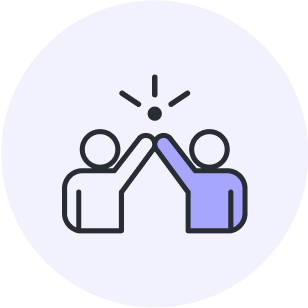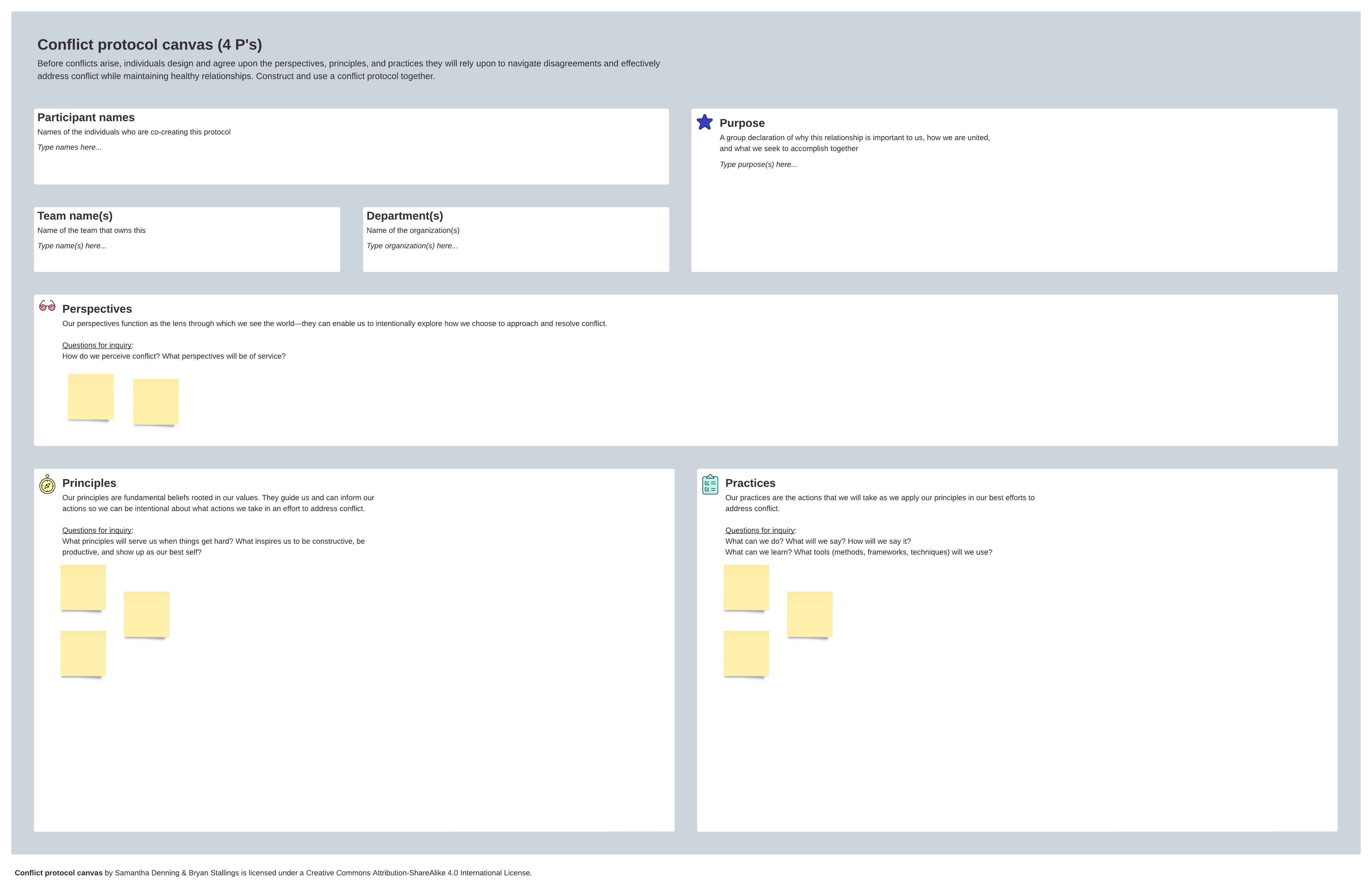
5 tips for collaborating cross-functionally with confidence
Reading time: about 8 min
Topics:
Navigating cross-functional teams is a rite of passage for virtually every knowledge worker. It’s a huge part of everyone’s job, but people are rarely taught how to do so effectively. Without the right approach, there may be frustrations, delayed projects, and an overabundance of meetings.
At Lucid, we understand that cross-functional collaboration is a skill set. It can be both taught and improved! And, with collaboration so deeply ingrained in our company culture and product philosophy, we’ve acquired tons of insights into what it takes to thrive in cross-functional settings.
Drawing from that well of experience, we've gathered top tips and strategies from Lucidites across departments and roles. We’re sharing those here to empower every knowledge worker to build their cross-functional collaboration skills.
Tip #1: Grasp the big picture
Before you dive into cross-functional collaboration, take time to understand the full scope of the project.
Ask yourself: What are you all trying to achieve together? Also, be sure you know when important deadlines are so you can plan your work accordingly.
Anthony Morelli, senior product management director at Lucid, explains the importance of getting to know those you’ll be collaborating with:
“Make sure you understand each person's role, incentives, and context. It's easy to accidentally talk past each other just because you're bringing different assumptions or perspectives. So, the upfront time spent getting on the same page (or, even better, same canvas) pays dividends.”
If something isn't clear, don't be afraid to ask questions. It's better to understand what's expected from the beginning.
Having all of the project information in a centralized place can drastically cut down the time it takes to find project details. At larger organizations, project managers may be in charge of creating a single source of truth for the team. But if not, it may be up to the team members.
Bear Shelton, senior customer education manager at Lucid, shared this as his number one cross-functional collaboration tip:
“[My number one tip is] to create a virtual team hub or team space. It's such a game-changer to have a single location where all your team or project resources, timelines, and plans are located. Then I know when I'm working with this team or project, I only have one place I need to go to access everything.”
Jane Enser, associate UX designer at Lucid, agrees! She says, “[You should] create a central hub for projects that links to all resources. Clear documentation saves time by allowing stakeholders to navigate independently, reducing the need for repetitive meetings.”

By understanding the big picture right from the start, you'll be better prepared to do your part and work well with your team.
Tip #2: Create a shared language with visuals
As with all types of collaboration, cross-functional work requires effective communication. But with often diverse backgrounds and skill sets, team members might feel like they’re speaking foreign languages.
Visuals serve as a powerful equalizer. Whether it's flowcharts, diagrams, or mind maps, visuals let team members convey complex concepts and intricate workflows in a digestible way.
Adam Ellsworth, senior product manager at Lucid, recommends:
“Take a few minutes and diagram it out. You'd be surprised how often everyone thinks they’re on the same page, but there are misunderstandings. Spending just one to two minutes on a diagram can save hours of back and forth later!”
When teams use visual collaboration tools, they can bridge the gap between technical and non-technical stakeholders. That’s because visuals help simplify complex ideas and workflows, making it easier for everyone to get aligned.
Plus, working together to create visuals encourages everyone to share their ideas and perspectives. Embracing visuals as a universal language improves communication, helps teams make smarter decisions, and move projects forward faster.

Tip #3: Keep everyone in the loop
Good communication in cross-functional teams isn't just about sharing updates—it's about fostering a culture of transparency. By maintaining transparent and consistent communication, teams can synchronize their work, align their goals, and propel projects forward.
One powerful approach to communication is "working out loud.” Jeff Rosenbaugh, senior professional services director at Lucid, explains this concept: “[Working out loud] is an asynchronous pattern. It encourages active communication through channels like Slack, where team members share their progress, insights, and challenges in real time.”
Visual collaboration platforms are another great way to work out loud. When you use this medium to share ideas, progress, and solve problems, you naturally create valuable documentation that’s easy to reference in the future.
You don’t always need another meeting—you might need better asynchronous workflows and habits.
Christopher Bailey, principal professional services consultant at Lucid, offers a way to decide whether to touch base asynchronously or synchronously:
“Lean on asynchronous touchpoints more for broad input and collaboration, and then synchronous sessions for synthesis and decision making. When planned well, both can accelerate time to action, inclusiveness, and buy-in.”

Do you need another meeting?
Check out our handy guide to deciding if you need another meeting or if asynchronous collaboration is the way to go.
Check it outMake sure to give regular updates in places where everyone can see them, like in team communication channels (or Team Spaces, if you’re using Lucid). These updates help everyone stay on the same page and know what's happening. The goal is to keep everyone moving in lockstep towards shared goals.
When in doubt, communicate! Connor Paulson, product manager at Lucid, says: “Communicate as openly as possible! It is more rare than common that information should be held back—everyone does better with more context.”
What does that mean for the average knowledge worker? Don’t be afraid to use these touchpoints—they’re for your benefit. Ask questions, present your work, and engage with other team members. Don't wait until roadblocks emerge. Reach out to collaborators early and often.
By keeping communication transparent and consistent, you'll help your team work better together and achieve your goals more smoothly.

Stepping outside your comfort zone is key to getting the most out of cross-functional collaboration. Try not to silo yourself. Instead, actively seek out new conversations and connections. Embracing different perspectives challenges your assumptions, broadens your ideas, and ultimately leads to your best work.
Bryan Stallings, chief evangelist at Lucid, talks about the importance of relationship-building skills in this process:
“Build interpersonal relationships! When we are unfamiliar with those on other teams, we often sense obstacles. For some collaboration styles, these slow interactions.”
Taking time to learn your unique collaboration style can make interactions with team members much smoother. Once you understand how you work best, connecting with others and understanding how they prefer to collaborate is easier.

What’s your collaboration style?
Lucid’s original research led to the development of three distinct collaboration styles. Curious what yours is?
Take the quizA great way to engage with your teammates is by proactively asking for feedback and input. Lucid’s Visual Activities are a great way to do that. These visual, interactive polls let you actively solicit feedback from team members to ensure you’re really gathering diverse perspectives.
Visual Activities also make for great icebreakers. When you take time to connect personally with your team, you’ll work better together.
“Visual Activities are game changers in the sense that they structure how input is gathered and help you quantify it quickly,” said Bailey.
In short, embracing diversity of thought isn't just about tolerating differences—it's about making your team stronger and your work more successful.
Tip #5: Be ready for conflict resolution
Cross-functional collaboration naturally brings up conflict. Far from being obstacles, moments of friction present valuable opportunities for growth and improvement.
Jessica Guistolise, evangelist at Lucid, offers a tactical tip for conflict resolution on cross-functional teams:
“Encourage setting up a working agreement for how your teams will work together. Ask questions like: How will you communicate? Is there a cadence for connecting? What happens when things are hard? How are we going to be together? How and where will we share information?”
With a working agreement, your team will have a document to guide actions on the day-to-day, and to refer to when conflicts arise. It’s important to establish your working agreement as a team. When you collectively decide on your team norms, then everyone is accountable.

But what if you aren’t working in a formal cross-functional team? Here’s a tip universally applicable to all cross-functional collaboration conflicts: Remember that everyone has a unique perspective shaped by their background and experiences. They also have different priorities and day-to-day responsibilities than you do. By actively listening and engaging in constructive dialogue, you can figure out the root of the conflict and use it to fuel progress.
Lastly, don’t shy away from addressing conflicts head-on. Handling conflicts well strengthens team trust. When you work through disagreements constructively, it demonstrates reliability and enhances team bonds.

Elevate your cross-functional collaboration workflows with Lucid
Today, work moves fast. There’s more pressure than ever to hit tight deadlines and do more with less. As a result, effective cross-functional collaboration is especially critical.
Lucid offers a comprehensive Visual Collaboration Suite to support cross-functional teams. Our platform bridges gaps between teams, supports the entire project workflow, and provides visuals for better understanding.
With Lucid, you can centralize documentation, communication, and collaboration in one place. Make it your single source of truth, and watch how seamless cross-collaboration feels.

Want to learn more about Lucid?
Our article on how Lucid helps teams build will walk you through even more benefits and use cases.
Check it outAbout Lucid
Lucid Software is the leader in visual collaboration and work acceleration, helping teams see and build the future by turning ideas into reality. Its products include the Lucid Visual Collaboration Suite (Lucidchart and Lucidspark) and airfocus. The Lucid Visual Collaboration Suite, combined with powerful accelerators for business agility, cloud, and process transformation, empowers organizations to streamline work, foster alignment, and drive business transformation at scale. airfocus, an AI-powered product management and roadmapping platform, extends these capabilities by helping teams prioritize work, define product strategy, and align execution with business goals. The most used work acceleration platform by the Fortune 500, Lucid's solutions are trusted by more than 100 million users across enterprises worldwide, including Google, GE, and NBC Universal. Lucid partners with leaders such as Google, Atlassian, and Microsoft, and has received numerous awards for its products, growth, and workplace culture.
Related articles
A step-by-step guide to assembling a cross-functional team
Modern teams work cross-functionally to create integrated campaigns. Learn to bring a cross-functional team together here.
Guide: How to build a single source of truth your team will actually use
Building a single source of truth is challenging, so we’ve put together this guide to walk you through the process.
The most important workplace collaboration skills today (with tips and courses to improve)
Get tips, resources, and courses to improve the most important collaboration skills in today’s complex, hybrid workforce.
Beyond the buzzword: What is visual collaboration?
It’s time we stop treating visual collaboration like a buzzword. Defined properly, it's the key to aligning teams and accelerating innovation.